Sound signalling device vs Sound signalling appliance Requirements - Short Blasts - Altering course
What is a sound signalling device on a boat?
A sound signalling device on a boat is a device that is used to make sounds to indicate the presence, position, or direction of the vessel.
There are several types of sound signalling devices that can be used on a boat:
-
a horn
-
a whistle
-
a bell
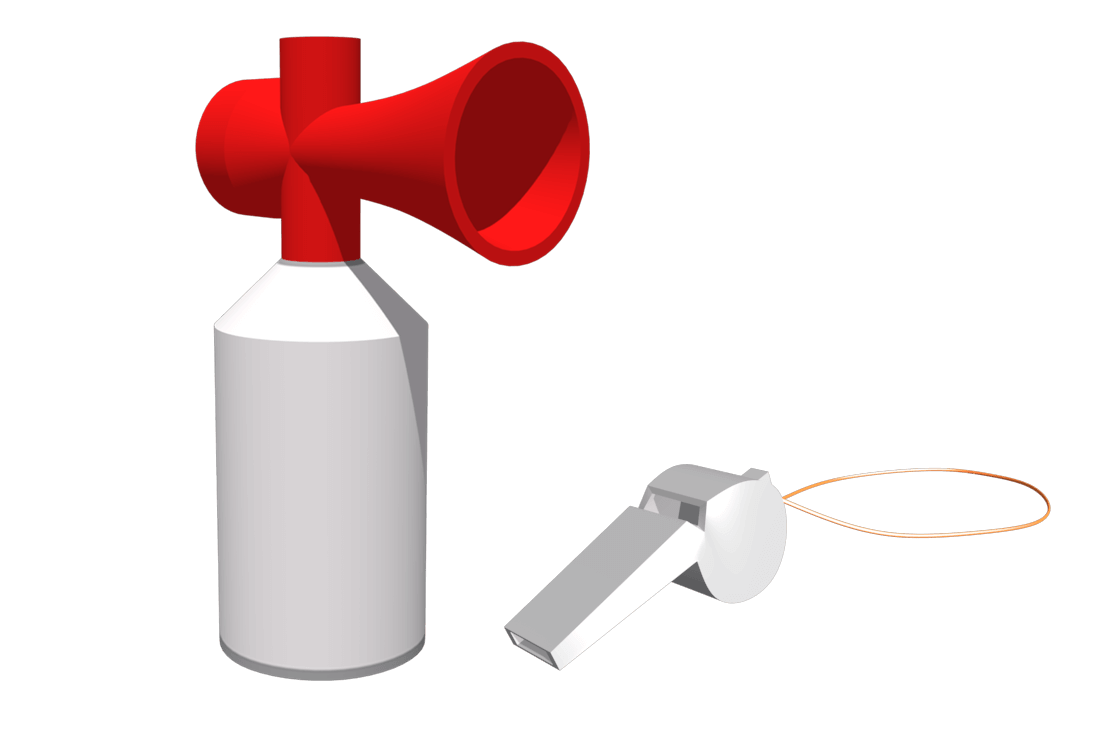
What is a sound signalling appliance?
Unlike the sound signalling device, the sound signalling appliance is an integral part of the boat, is affixed to it and is in good working order. A sound signalling device can be a pealess safety whistle, a compressed gas horn, an electric horn, a gong or a bell. Whistles with a pea inside are not regulatory as they will not work with water in them.
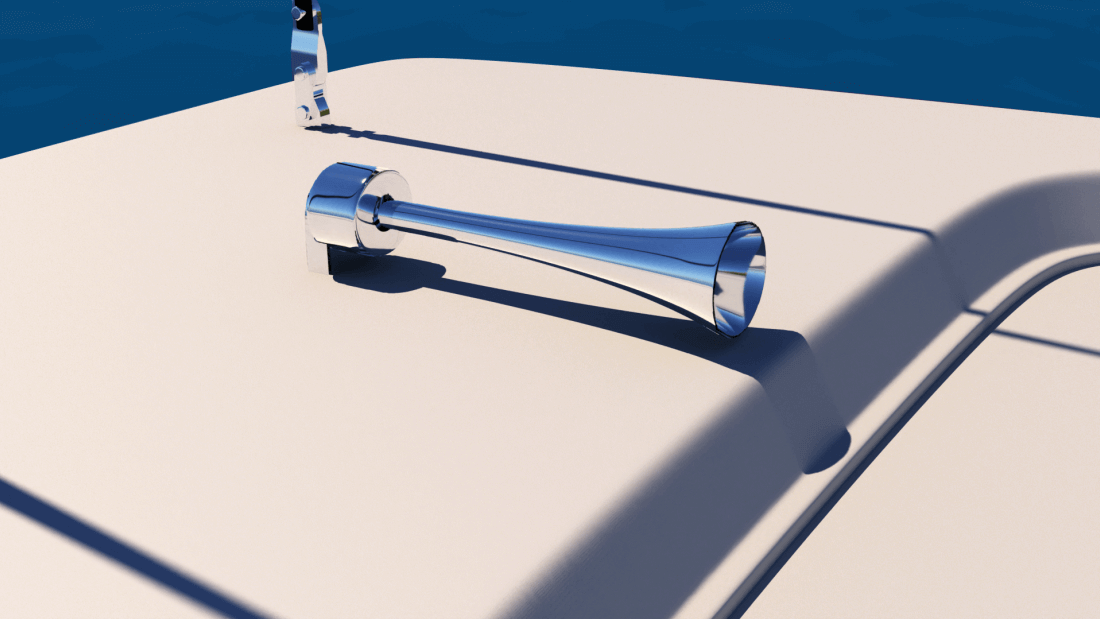
On which boat do we need a sound signaling device?
All boats are required to carry a sound signalling device or appliance to signal their position and intentions. Depending on the size of boat, different sound signalling devices or appliances may be required:
What are the different sound signals used when maneuvering a boat?
One short blast = "I intend to alter my course to starboard."

Two short blasts = "I intend to alter my course to starboard."
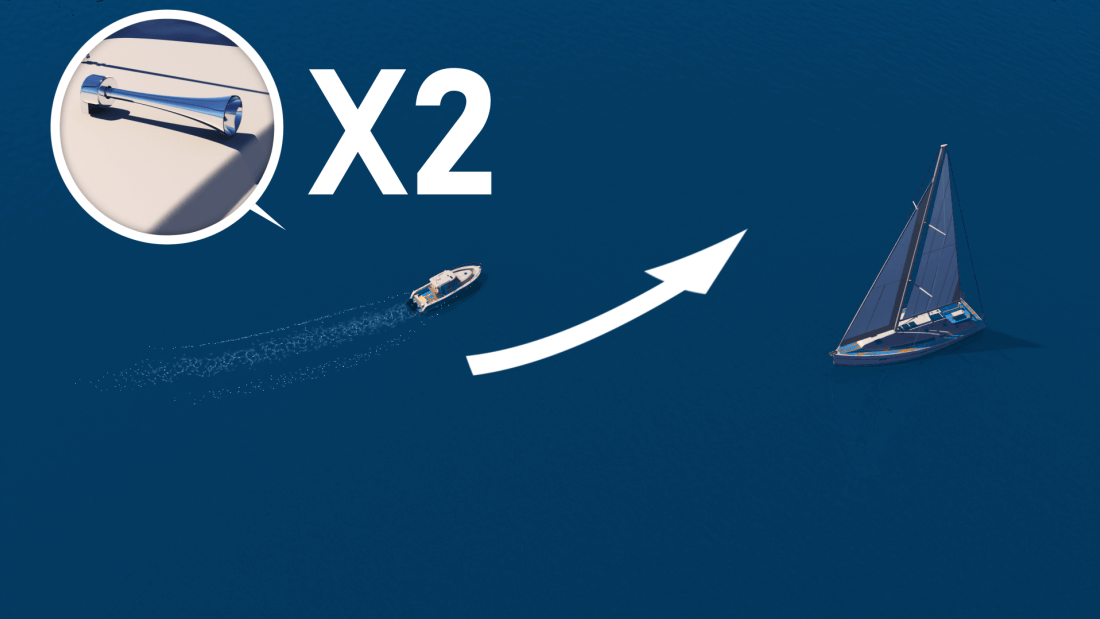
Three short blasts = "I am backing up."
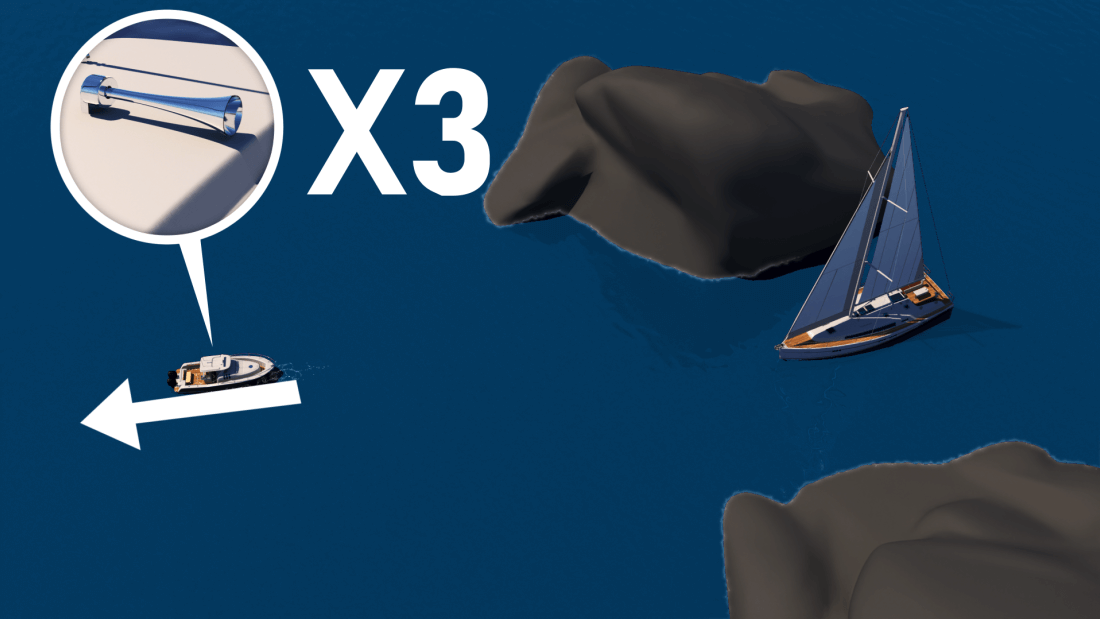
Five short blasts = Signal danger, or signal that you do not understand or that you disagree with the other boater's intentions.
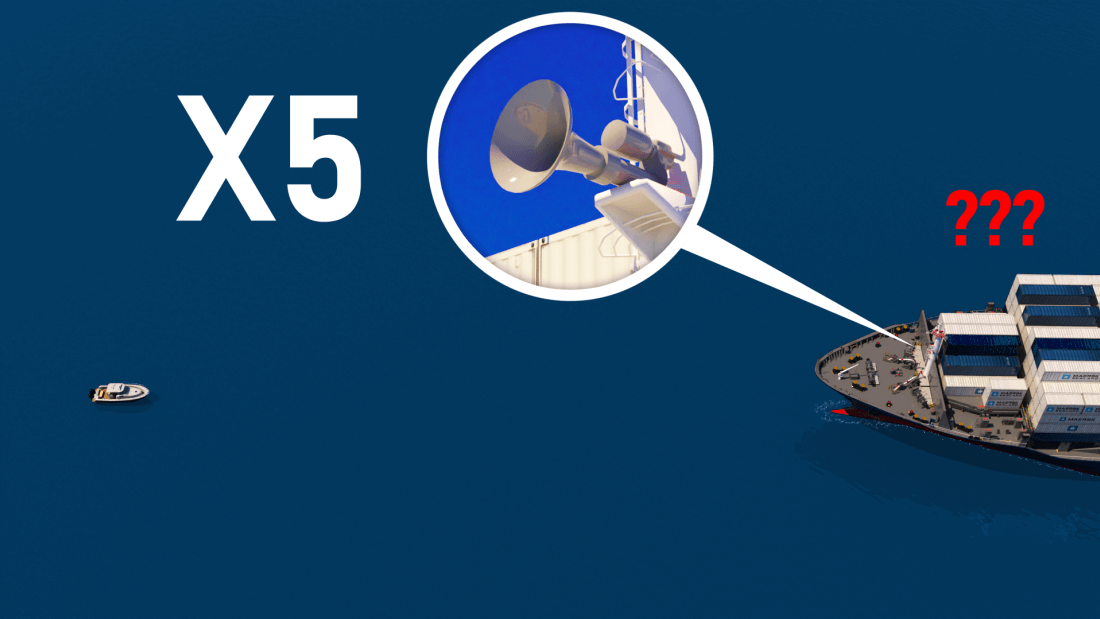
One prolonged blast from the horn of a vessel serves as a warning to other ships that an unseen vessel is in the water. Any vessels within earshot of the prolonged horn blast should reply with a prolonged blast of their own.
Risk of Collision, states that every vessel shall use all available means to determine if risk of collision exists; if there is any doubt, assume that it does exist. Risk of collision shall be deemed to exist if the compass bearing from your vessel to an approaching vessel does not change. Constant bearing decreasing range (CBDR) is the term we use to describe this situation. Collision risk may sometimes exist even when appreciable bearing change is evident, particularly when approaching a very large vessel or a vessel towing or when approaching a vessel at very close ranges